At WoolyPooly, we’ve always been at the forefront of the web3 revolution. Our topical authority in the web3 niche is evident from our extensive collection of articles on the subject. If you’ve been following our Web3 series, you know we’re passionate about the decentralized web. Today, we’re diving into the realm of Web3 Twitter alternatives, platforms that are reshaping the way we think about social media.
Table of Contents
What is Web3?
Web3 represents the next phase of the internet. Unlike the centralized platforms of Web2, Web3 offers a decentralized approach, giving users more control, privacy, and freedom. In the context of social media, this means a shift from platforms like Twitter, where one entity has control, to a more democratic space.
The Limitations of Traditional Social Media Platforms
Traditional social media platforms, while immensely popular and influential, come with their own set of limitations. These limitations often stem from their centralized nature, which gives disproportionate power to a single entity or organization. This centralization can lead to a range of issues, from censorship to data breaches. Let’s delve deeper into these limitations:
Detailed Chart on Limitations
| Limitation | Description | Implications for Users | Examples |
|---|---|---|---|
| Centralized Control | Most platforms are owned and operated by a single entity or organization. | – Limited user control over data and content. – Algorithmic biases can affect content visibility. | Twitter’s and Facebook’s algorithm changes affecting content reach. |
| Censorship | Platforms can arbitrarily decide what content to allow or disallow. | – Suppression of voices and opinions. – Arbitrary removal of content without clear reasons. | Removal of political content or controversial figures from platforms like YouTube or Twitter. |
| Privacy Concerns | Platforms collect vast amounts of user data. | – Risk of data breaches. – Misuse of personal information for targeted ads. | Facebook-Cambridge Analytica data scandal. |
| Monetization Models | Platforms primarily rely on ads for revenue. | – Users are the product, not the customer. – Intrusive ads disrupt user experience. | Overwhelming ads on platforms like Instagram or YouTube. |
| Echo Chambers | Algorithms show users content similar to what they’ve liked before. | – Limited exposure to diverse viewpoints. – Reinforcement of existing beliefs. | Political bubbles on Facebook where users only see content aligning with their views. |
| Content Ownership | Users don’t own the content they post. | – Platforms can use user content for promotions without explicit consent. – Risk of content being taken down without recourse. | Instagram using user photos for ads without permission. |
| Platform Lock-in | Difficult to migrate data and connections to other platforms. | – Users feel trapped and are less likely to explore new platforms. – Loss of content if a platform shuts down. | Google+ users losing content when the platform was discontinued. |
Introduction to Web3 Twitter Alternatives
The world of social media is undergoing a transformation. As users become increasingly aware of the limitations of traditional platforms, there’s a growing interest in decentralized alternatives. These Web3 platforms promise more user control, better privacy, and often incorporate blockchain technology for transparency and security. Let’s explore some of the most notable Web3 Twitter alternatives:
Detailed Chart on Web3 Twitter Alternatives
| Platform | Origin/Company | Character Limit | Unique Features/Notes |
|---|---|---|---|
| Mastodon | Mastodon gGmbH, Germany | 500 | – Open-source and decentralized. – User-friendly interface similar to Twitter. |
| Pebble | Berkeley UNIVERSITY, California, US | 500 | – Focuses on privacy and user control. – Clean, minimalistic design. |
| Counter.Social | Decentralized Project | 500 | – Emphasizes security and user safety. – Bans users from certain countries for security reasons. |
| Diaspora | Diaspora Foundation | 65535 | – User-owned data with no central server. – Offers hashtags, mentions, and aspects (similar to Google+ circles). |
| Hey.XYZ | Decentralized Project | >1300 (Exact limit not specified) | – Requires wallet connection, emphasizing its Web3 nature. – Users need to pass specific verifications to join. |
| Phaver | Decentralized Project | >1300 (Exact limit not specified) | – Offers a decentralized approach to social networking, allowing users to have full ownership and control over their online social graph. – For users unfamiliar with Web3, the platform might have a steeper learning curve. |
| EtherTweet | Decentralized Project | 160 | – Truly decentralized, leveraging the Ethereum blockchain. – Lack of a GUI can be intimidating for non-technical users. |
In-depth Analysis of Top Web3 Twitter Alternatives
Mastodon – Best Web3 Twitter Alternative
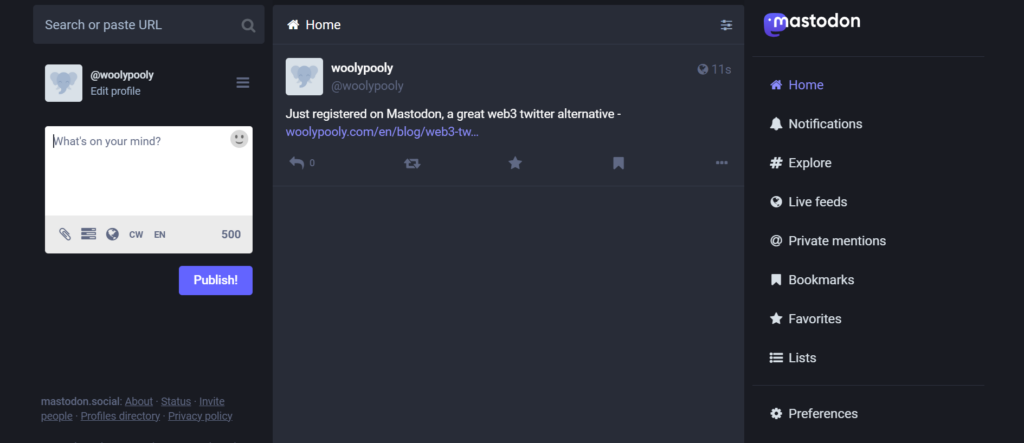
Mastodon is an open-source and decentralized social networking platform with a user-friendly interface reminiscent of Twitter. Originating from Mastodon gGmbH in Germany, it allows for a character limit of 500. The platform is crowdfunded by Patreon donations.
According to Wikipedia, each Mastodon user is a member of a specific Mastodon server and can interact seamlessly with users from any other server. This federated structure is designed to offer users the flexibility to choose a server whose policies align with their preferences while still being part of a larger, interconnected social network. Mastodon is powered by the ActivityPub protocol, positioning it within the Fediverse, a collective of services that includes Lemmy, Pixelfed, Friendica, and PeerTube. The platform was conceived by Eugen Rochko and made its debut announcement on Hacker News in October 2016.
Pros and Cons Chart:
| Pros | Cons |
|---|---|
| High user control and data ownership. | Fragmented communities due to multiple instances. |
| Familiar interface for easy transition from traditional platforms. | Requires user effort to find and join active communities. |
Pebble
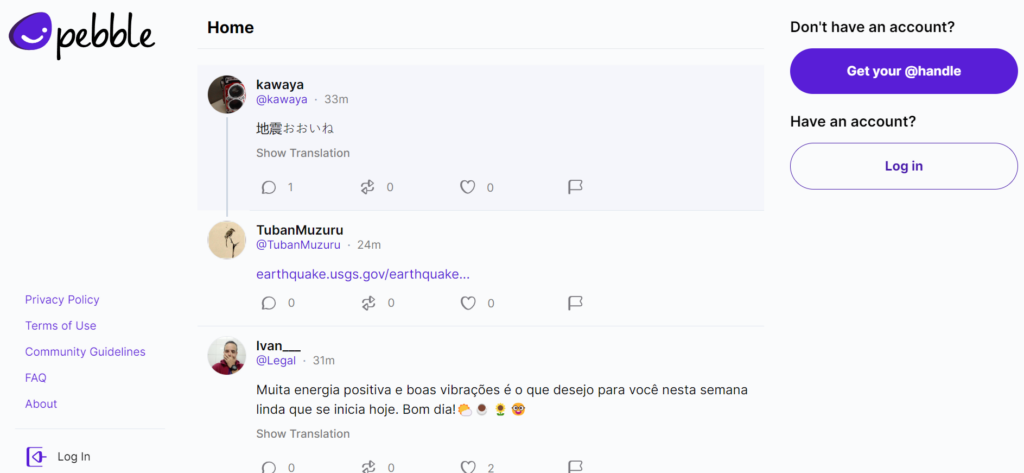
Pebble is a Web3 social platform that emphasizes privacy and user control. It sports a clean, minimalistic design and also has a character limit of 500.
Pros and Cons Chart:
| Pros | Cons |
|---|---|
| Enhanced user privacy. | Lesser known, so might have a smaller community. |
| Intuitive design for easy navigation. | Phrase “We’ve got what we need, let’s see if you’re a good fit for Pebble…” when you sign up can come off as exclusive or unwelcoming to some users. |
Counter.Social
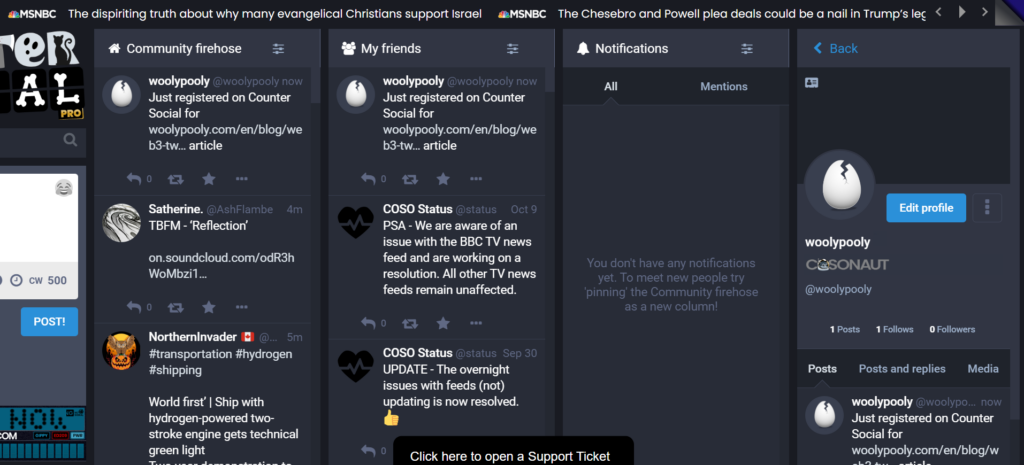
Counter.Social is a decentralized platform that places a strong emphasis on security and user safety. It bans users from certain countries for security reasons and offers a character limit of 500.
Pros and Cons Chart:
| Pros | Cons |
|---|---|
| High focus on user security. | Exclusion of certain countries might limit global discourse. |
| Decentralized nature ensures data integrity. | Might be perceived as selective censorship. |
Diaspora
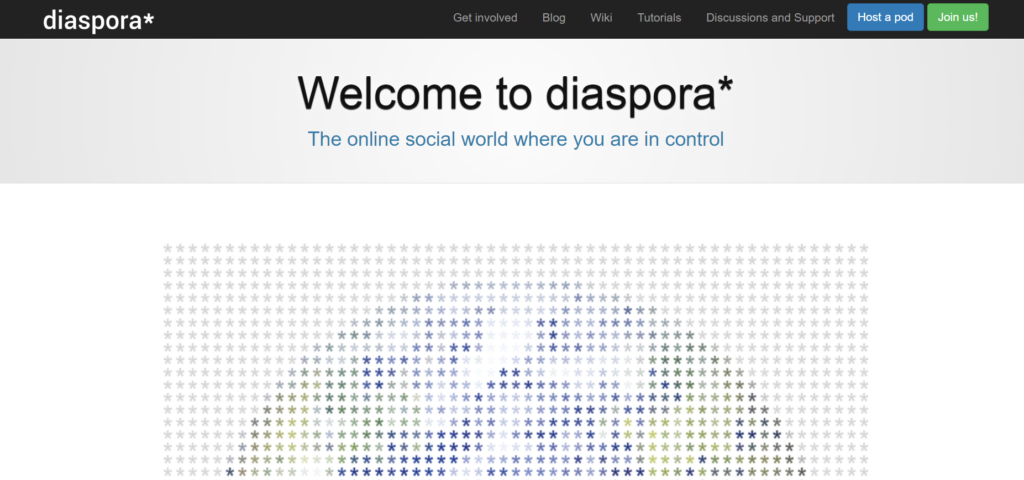
Diaspora is a decentralized social network where users own their data without a central server. It’s not so public and global as twitter. It offers features like hashtags, mentions, and aspects (similar to Google+ circles) and boasts a generous character limit of 65,535.
Pros and Cons Chart:
| Pros | Cons |
|---|---|
| High character limit allows for detailed posts. | Interface might feel dated to some users. |
| Decentralized nature ensures no single point of control. | Requires more effort to find active communities. |
Hey.XYZ
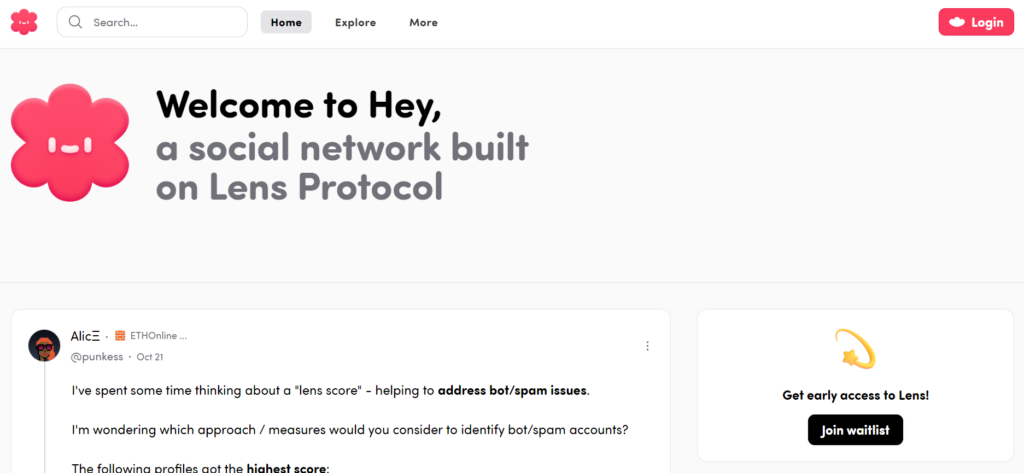
Hey.XYZ is a unique Web3 Twitter alternative built on the Lens Protocol, that requires a wallet connection for user interaction. Prospective users need to pass specific verifications to join. The exact character limit isn’t specified, but it’s observed to be more than 1300 based on posts.
Pros and Cons Chart:
| Pros | Cons |
|---|---|
| Strong emphasis on Web3 with wallet connections. | Barrier to entry due to verification processes. |
| Exclusive nature might attract a dedicated community. | Limited public information due to its exclusivity. |
Phaver – Twitter Alternative Based on Lens Protocol
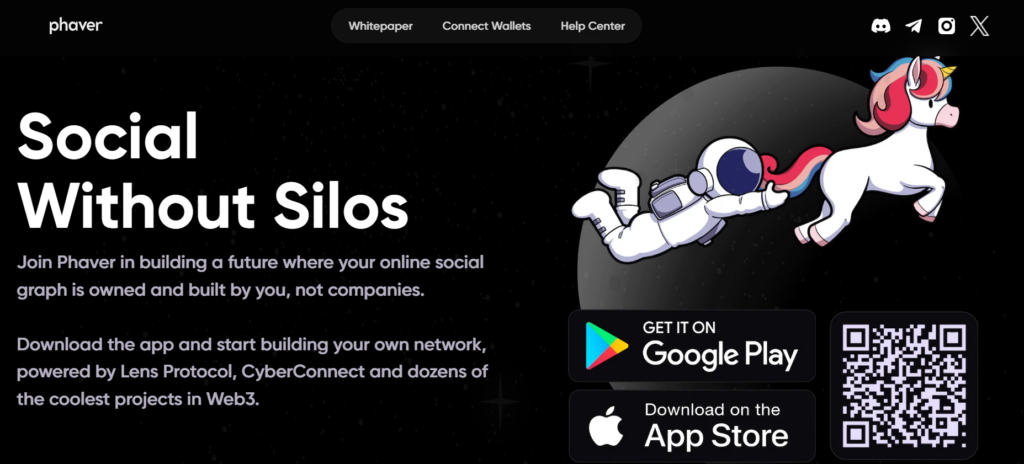
Phaver is a mobile app that is also built on the Lens Protocol, aiming to revolutionize the Web3 social space. It envisions a future where online social graphs are owned and constructed by individuals rather than corporations. By partnering with Lens Protocol, CyberConnect, and several other notable Web3 projects, Phaver allows users to build their unique network.
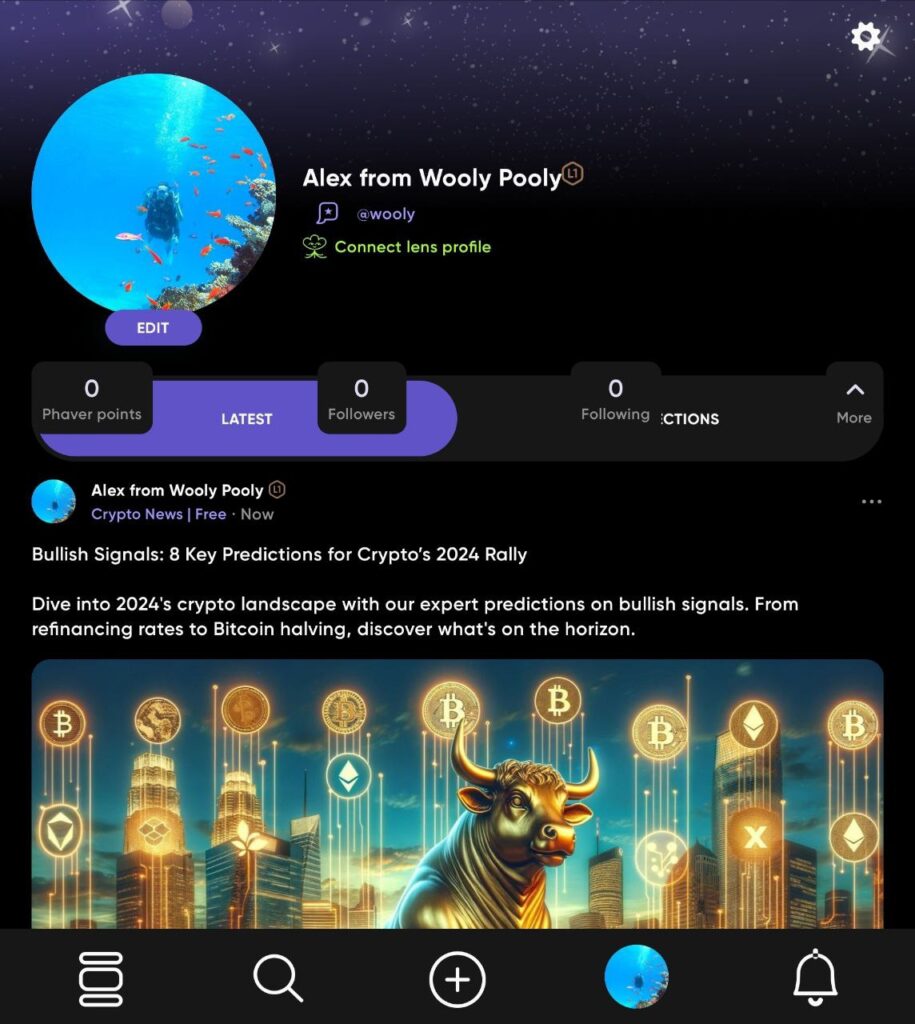
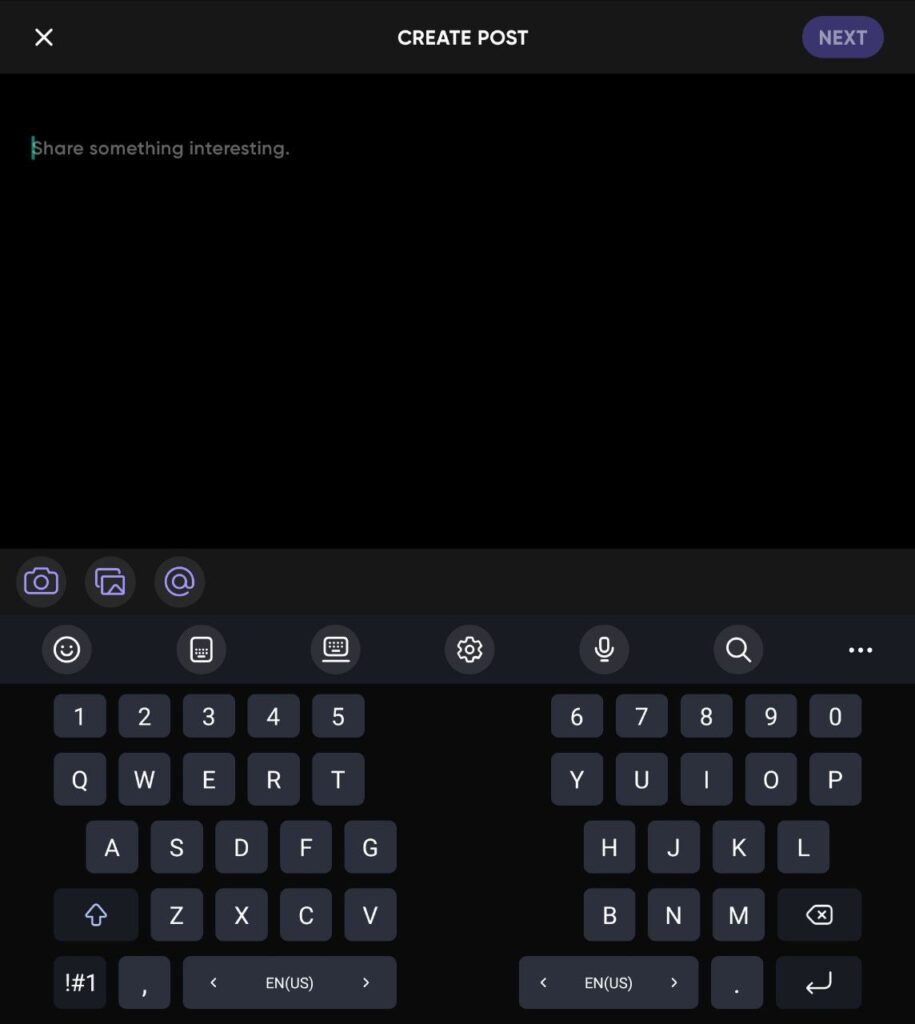
The platform emphasizes openness, with no whitelists or complex hoops to jump through. Users can connect their Lens Protocol and CyberConnect accounts, bringing their social interactions on-chain. Additionally, Phaver integrates Web3 collectibles, badges, and credentials, enabling users to enhance their credibility, level up, and avail unique perks. The platform also offers gamified and farming-resistant reward mechanisms, ensuring deserving individuals earn Phaver Points and future token rewards for their contributions.
Pros and Cons Chart:
| Pros | Cons |
|---|---|
| Phaver welcomes everyone without the need for whitelists. Users can simply sign up with their email or social login. | Being a new platform in the Web3 space, it might take time for users to adapt and trust the platform fully. |
| Users can connect their Lens Protocol and CyberConnect accounts, allowing them to take their social interactions on-chain. | While the multi-protocol feature is a strength, it also means users need to be familiar with other platforms like Lens Protocol and CyberConnect. |
| By connecting Web3 collectibles, badges, and credentials, users can build their credibility and access unique perks. | For users unfamiliar with Web3, the platform might have a steeper learning curve. |
| The platform has gamified and farming-resistant reward mechanisms, ensuring deserving users earn Phaver Points and future token rewards. | The future value and utility of Phaver Points and other token rewards are not guaranteed. |
EtherTweet – Ethereum Based Twitter Alternative
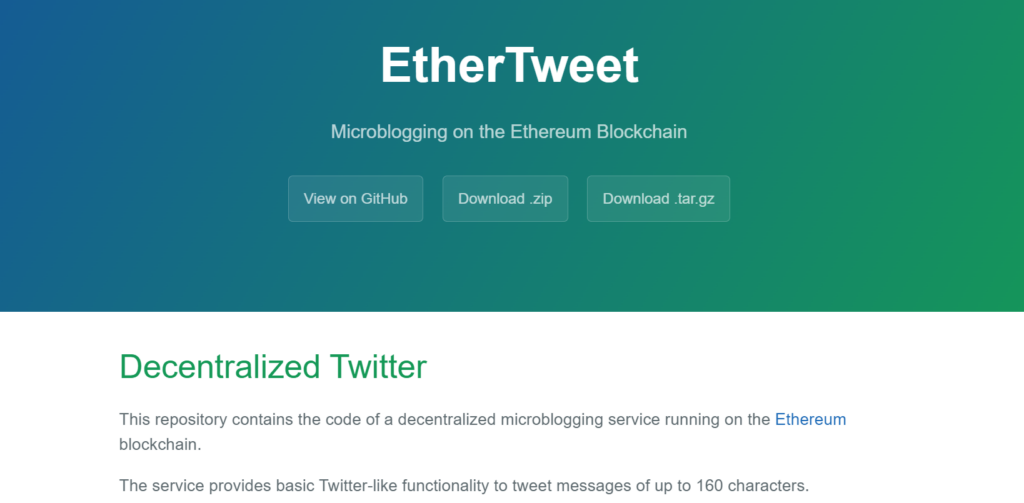
EtherTweet is a unique take on decentralized microblogging, built on the Ethereum blockchain. Unlike traditional platforms, EtherTweet does not come with a graphical user interface (GUI). To interact with the platform and read tweets, users need to install ‘geth’ (Go Ethereum) and initiate it using the command geth --rpc --rpccorsdomain="http://ethertweet.net". This command-line approach offers a raw, blockchain-centric experience, emphasizing the decentralized nature of the platform.
Pros and Cons Chart:
| Pros | Cons |
|---|---|
| Truly decentralized, leveraging the Ethereum blockchain. | Lack of a GUI can be intimidating for non-technical users. |
| Reduced risk of censorship due to its decentralized nature. | Requires installation and use of ‘geth’, adding complexity to user interaction. |
| Offers a pure blockchain experience for enthusiasts. | Might not appeal to mainstream users looking for a more traditional social media experience. |
| Potentially more secure due to direct blockchain interaction. | Limited features and user-friendliness compared to other platforms. |
Benefits of Using Web3 Twitter Alternatives
The rise of Web3 Twitter alternatives is not just a fleeting trend; it’s a response to the growing demand for more transparent, user-centric platforms. As the digital landscape evolves, so do the expectations of its users. Let’s delve deeper into the benefits of using Web3 Twitter alternatives:
Enhanced User Privacy
Traditional social media platforms have often been under scrutiny for their handling of user data. With centralized models, these platforms have the authority to collect, store, and even sell user data to third parties. In contrast, Web3 platforms prioritize user privacy. Built on decentralized networks, they ensure that users have full control over their data, reducing the risk of unauthorized access or misuse.
True Content Ownership
On many traditional platforms, once you post content, the platform retains certain rights to it. Web3 platforms, however, operate on the principle of true content ownership. This means that when users post content, they retain full rights to it, and it cannot be used or monetized by the platform without the user’s explicit consent.
Resistance to Censorship
Centralized platforms can be influenced by various external factors, leading to content censorship. Web3 platforms, being decentralized, are inherently resistant to censorship. This ensures that voices are not suppressed and that there’s a free flow of information.
Community-driven Development and Governance
Web3 platforms often operate on a community-driven model. This means that the community of users has a say in the platform’s development, features, and even governance. Such a model ensures that the platform evolves in a direction that its user base genuinely desires.
Enhanced Security
Given their decentralized nature, Web3 platforms are less vulnerable to large-scale data breaches that can occur in centralized systems. Blockchain technology, which underpins many Web3 platforms, offers robust security features, ensuring data integrity and protection against malicious attacks.
Interoperability and Integration
Web3 platforms are often built with interoperability in mind. This means they can seamlessly integrate with other decentralized applications (DApps), services, and platforms in the Web3 ecosystem, offering users a richer and more cohesive digital experience.
Challenges and Criticisms of Web3 Twitter Alternatives
While Web3 Twitter alternatives offer a plethora of benefits, they are not without their challenges and criticisms. As with any emerging technology, there are hurdles to overcome and areas of contention. Let’s delve deeper into the challenges and criticisms these platforms face:
Technical Barriers to Entry
For many users accustomed to the simplicity of traditional platforms, the transition to Web3 can be daunting. Setting up digital wallets, understanding blockchain, or managing cryptographic keys can be complex for the average user, potentially limiting widespread adoption.
Scalability Concerns
Blockchain, the backbone of many Web3 platforms, has faced scalability issues. As these platforms grow in user base and transaction volume, there are concerns about their ability to handle increased demand without compromising on speed or incurring high transaction fees.
Potential for Echo Chambers
While Web3 platforms champion decentralization and resistance to censorship, there’s a risk of creating echo chambers. Users might gravitate towards communities that only reinforce their existing beliefs, limiting exposure to diverse viewpoints.
Security Concerns
While blockchain is touted for its security, it’s not immune to vulnerabilities. Smart contract bugs, wallet mismanagement, or phishing attacks can pose risks to users. Moreover, once a transaction is recorded on the blockchain, it’s immutable, meaning errors cannot be easily rectified.
Regulatory Uncertainty
The decentralized nature of Web3 platforms poses challenges for regulators. Different countries might have varying stances on decentralization, cryptocurrency, and token-based incentives. This regulatory uncertainty can hinder the growth and adoption of these platforms.
6. Network Effect of Established Platforms: Traditional platforms like Twitter have the advantage of a vast user base. New users are more likely to join platforms where their networks already exist. Web3 platforms need to overcome this network effect to attract users away from established platforms.
Monetization and Sustainability
While donations are a hallmark of Web3 platforms, there are concerns about the long-term sustainability of such models. Over-reliance on donations might lead to inflationary pressures or reduced platform revenue.
User Experience Inconsistencies
Given the nascent stage of Web3 platforms, user experience can be inconsistent. Features available on traditional platforms might be missing, or the interface might not be as polished, potentially deterring users accustomed to more refined platforms.
Data Retrieval and Portability
While blockchain ensures data immutability, retrieving specific data or migrating to a different platform can be challenging. Unlike centralized databases, where data retrieval is straightforward, blockchain requires more complex processes.
Future Outlook: Where is Web3 Social Headed?
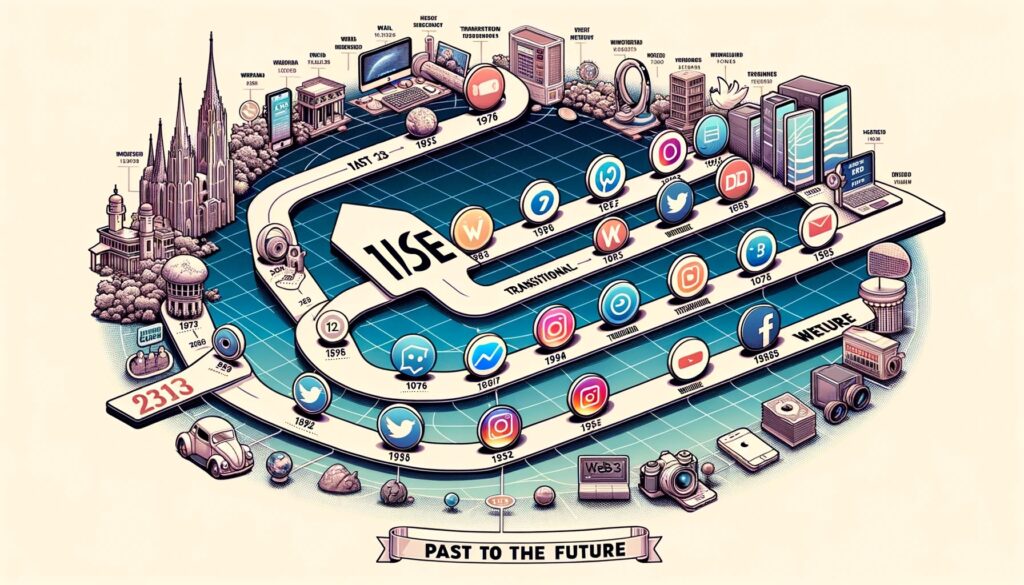
The realm of Web3 social platforms is still in its infancy, yet it’s rapidly evolving, driven by technological advancements, user demands, and the broader shift towards a decentralized internet. As we look to the horizon, several trends and predictions emerge about the direction in which Web3 social is headed:
Integration with Broader Web3 Ecosystem
Web3 social platforms won’t exist in isolation. They’re likely to integrate seamlessly with other decentralized applications (DApps), marketplaces, and services. Imagine tweeting about a digital artwork and instantly listing it for sale on a decentralized marketplace, all within the same ecosystem.
Rise of Decentralized Identity
As privacy concerns mount, there will be a move towards decentralized identity solutions. Users will have control over their digital identities, deciding what information to share and with whom, without relying on centralized entities for authentication.
Enhanced Monetization Opportunities
Beyond token-based rewards, we’ll see innovative monetization models. This could include direct payments for content creators, tokenized ad models where users have a say in the ads they see, or even decentralized crowdfunding for content projects.
Evolution of Governance Models
Community-driven governance will become more sophisticated. Token-based governance, where users vote on platform features, policies, or even dispute resolutions, will be common. This ensures that the platform evolves based on genuine user needs and feedback.
Interoperability will be Key
Users will demand the ability to move seamlessly between different Web3 platforms, carrying their identity, reputation, and even digital assets with them. This interoperability will break down silos and create a more interconnected Web3 universe.
Enhanced Security Protocols
As Web3 platforms become more mainstream, they’ll be targets for malicious actors. We’ll see the development of more robust security protocols, multi-signature wallets, and advanced cryptographic techniques to safeguard user data and assets.
Virtual Reality (VR) and Augmented Reality (AR) Integration
The convergence of Web3 with VR and AR technologies will redefine social interactions. Virtual decentralized social spaces where users can interact using avatars, attend events, or even hold meetings will become popular.
Mainstream Adoption Challenges
While the Web3 community is enthusiastic, mainstream adoption will require addressing challenges related to user experience, education, and regulatory clarity. Efforts will be directed towards making Web3 platforms as user-friendly as their centralized counterparts.
Ethical and Sustainable Platforms
There will be a push towards more ethical social platforms that prioritize user well-being, mental health, and positive interactions. Additionally, as blockchain networks can be energy-intensive, there will be a move towards more sustainable and eco-friendly consensus mechanisms.
Decentralized Content Algorithms
Instead of opaque algorithms deciding content visibility, we might see community-driven or even personalized algorithms. Users could tweak their feeds based on their preferences, free from platform biases.
Conclusion
The digital landscape is undergoing a seismic shift. As the limitations and challenges of traditional social media platforms become increasingly evident, the allure of Web3 alternatives grows stronger. These platforms, built on the principles of decentralization, transparency, and user empowerment, are not just technological marvels; they represent a fundamental reimagining of online social interactions.
EtherTweet, Mastodon, and their contemporaries are more than just platforms; they’re harbingers of a new era. An era where users regain control over their data, where content is genuinely democratized, and where the very fabric of online communities is woven with trust and transparency.
However, as with any transformative movement, challenges lie ahead. From technical barriers to regulatory uncertainties, the road to mainstream adoption of Web3 social platforms is fraught with obstacles. But, as history has shown, when technology aligns with a genuine human need – in this case, the desire for more authentic, user-centric online spaces – it finds a way to thrive.
At WoolyPooly, we’ve been privileged to witness and document this evolution. As we stand at this digital crossroads, one thing is clear: the future of social media is not just about tweets, likes, or shares. It’s about redefining the very essence of online community, interaction, and identity. And in this brave new world, every user, every voice, and every tweet – whether on EtherTweet or another platform – plays a pivotal role in shaping the decentralized narrative of tomorrow.
FAQs
What is a Web3 Twitter alternative?
It’s a decentralized version of platforms like Twitter, built on Web3 technology.
How do tokens work on these platforms?
Tokens can be earned for content creation, engagement, and can also be used for platform governance.
Are Web3 platforms safe?
While they offer more control and privacy, they are not immune to technical vulnerabilities. Always do your research before joining.


